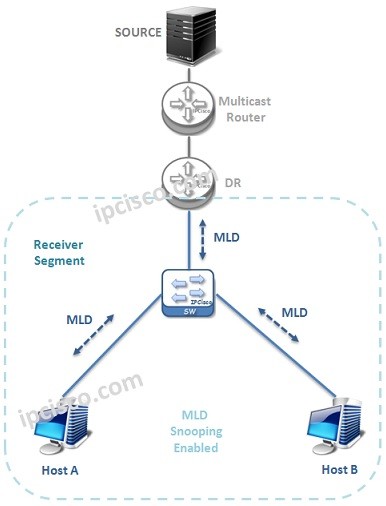Table of Contents
What is MLD?
Multicast Listener Discovery (MLD) is the IPv6 Multicast Group Membership Protocol. It works between the Multicast Routers and the Multicast hosts with Query,Report and Leave Messages. MLD works between MLD Querier router and the hosts. It controls Multicast member joins and leaves.

• MLDv1
• MLDv2
Let’s look deeper to these MLD versions.
MLDv1
MLDv1 is the default MLD version. The working principles are like IGMPv2. With MLDv1, Multicast receivers can receive multicast traffic from any Multicast Sources. They have no option for Multicsat Source selection.
There are three message types in MLDv1. These messages types are:
• Listener Query (Type 130) (General or Multicast Group Specific)
• Listener Report (Type 131)
• Listener Leave (Done) (Type 132)
Listener Query message is used to find if are there any multicast traffic receivers (Querior to Receivers).
Listener Report message is used to join a multicast group (Receivers to Queriers).
Listener Leave message is used to leave a multicast group (Receivers to Queriers).
The type of the message is specified in the type field in the MLD Header. You can find the MLDv1 Header fields below:

MLDv2
MLDv2 is the enhanced version of MLDv1. It is like IGMPv3. With MLDv2, specific Multicast Sources can be selected as a source of Multicast traffic. To use MLDv2, the router must be configured for version 2.
In MLDv2 there are two types of messages. These are:
• Listener Query (Type 130)
• New MLDv2 Listener Report (Type 143)
Listener Query message is used to find if are there any multicast traffic receivers (Querior to Receivers).
New MLDv2 Listener Report message is used to join multiple groups ans sources (Receivers to Queriers).
You can find the MLDv2 Header fields below:

MLDv2 Report Message has two modes. These modes are:
• Include Mode
• Exclude Mode
Include Mode provide to receive Multicast traffic from the specificed Multicast Source specified in the Report Message.














Leave a Reply